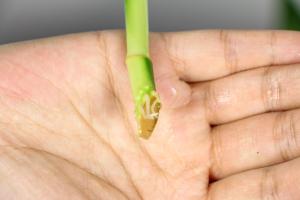Is Gravel a Good Substrate for Plants?
Gravel is a popular choice for aquarium substrate due to its aesthetic appeal and affordability. However, when it comes to planting live aquatic plants, gravel may not be the best option.
The Issue with Gravel as Substrate
Firstly, most types of gravel do not provide the necessary nutrients for plant growth. Aquatic plants require a substrate that is rich in nutrients like iron, potassium and nitrogen. These are essential for the plant’s photosynthesis and growth. Gravel, being inert, does not provide these nutrients and therefore hinders plant growth.
Secondly, gravel does not have a good water-holding capacity. This means that the substrate can dry out quickly, leaving the plants without enough moisture for growth. Additionally, gravel can create stagnant areas in the aquarium, allowing debris and other organic matter to accumulate. This can lead to the build-up of harmful bacteria and waste, further harming the plants.
Alternatives to Gravel Substrate
For better plant growth and health, it is recommended to use specific aquarium plant substrate that contains the necessary nutrients. These substrates are designed for plant growth and are rich in minerals, clay and organic matter.
Another option is to use soil as substrate. Soil can provide the necessary nutrients for plant growth and has a high water-holding capacity. It is important to note, however, that using soil can darken the water and cause other issues if not used correctly.
Tips for Using Gravel as Substrate for Aquatic Plants
If you are determined to use gravel as substrate for your aquatic plants, there are a few tips to follow:
Make sure to add root tabs or other fertilizers to the gravel to provide nutrients for the plants.
Ensure that the gravel layer is deep enough to allow for plant roots to grow properly. A depth of at least 2-3 inches is recommended.
Choose a smaller grain size of gravel to prevent it from compacting too much and hindering plant growth.
Rinse the gravel thoroughly before adding it to the aquarium. This will remove any dirt or debris that can harm the plants.
The Bottom Line
Overall, gravel may not be the ideal substrate for aquatic plants due to its lack of nutrients and poor water-holding capacity. It is recommended to use specifically designed aquarium plant substrate or soil for better plant growth and health. However, if you do choose to use gravel, follow the tips mentioned above and give your plants the best chance for success.

 how many times do yo...
how many times do yo... how many planted tre...
how many planted tre... how many pine trees ...
how many pine trees ... how many pecan trees...
how many pecan trees... how many plants comp...
how many plants comp... how many plants can ...
how many plants can ... how many plants and ...
how many plants and ... how many pepper plan...
how many pepper plan...






























